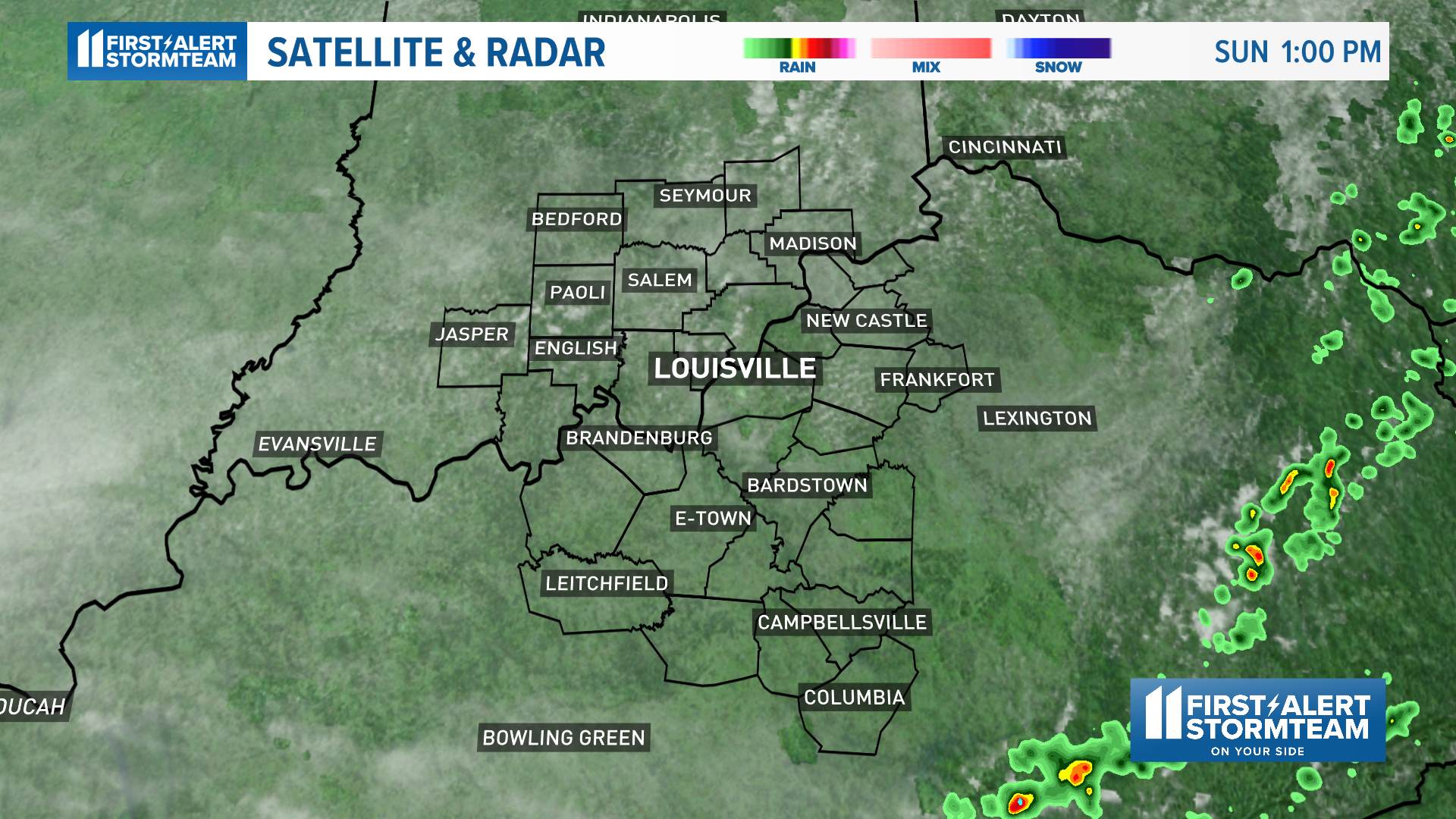Louisville Weather Radar Overview

The Louisville weather radar is a powerful tool that provides vital information about the weather in the Louisville, Kentucky area. It is operated by the National Weather Service (NWS) and is part of a network of radars that cover the United States.
Louisville’s weather radar provides a real-time glimpse into the city’s atmospheric conditions. For more detailed and comprehensive forecasts, consider consulting WCPO Weather. Their team of meteorologists offers up-to-the-minute updates on Louisville’s weather radar, ensuring you stay informed about impending storms, precipitation, and other weather events.
The Louisville weather radar was first installed in 1994 and has been upgraded several times since then. The current radar is a dual-polarization radar, which means that it can detect both the horizontal and vertical components of precipitation. This allows the radar to provide more accurate information about the type and intensity of precipitation.
Keep a watchful eye on Louisville’s ever-changing weather patterns with our state-of-the-art weather radar. Track approaching storms with ease using our storm tracker , providing real-time updates on their path and intensity. With our radar, you’ll stay informed and prepared for whatever the Louisville skies may bring.
Coverage Area
The Louisville weather radar has a coverage area of approximately 120 miles in all directions. This coverage area includes the entire Louisville metropolitan area, as well as parts of Kentucky, Indiana, and Ohio.
Capabilities
The Louisville weather radar can detect a variety of weather phenomena, including rain, snow, hail, and tornadoes. It can also track the movement of storms and provide information about their intensity. The radar data is used by the NWS to issue weather forecasts and warnings for the Louisville area.
Louisville Weather Radar Data and Interpretation

The Louisville weather radar collects a variety of data that can be used to identify weather patterns and forecast future weather conditions. This data includes:
- Reflectivity: This data measures the amount of energy reflected back to the radar by precipitation particles. Higher reflectivity values indicate heavier precipitation.
- Velocity: This data measures the speed and direction of precipitation particles. Positive velocity values indicate precipitation moving towards the radar, while negative velocity values indicate precipitation moving away from the radar.
- Spectrum width: This data measures the spread of precipitation particle sizes. Wider spectrum width values indicate a greater variety of precipitation particle sizes.
These data can be combined to create a variety of weather products, including:
- Base reflectivity: This product shows the distribution of precipitation intensity.
- Velocity: This product shows the movement of precipitation.
- Storm total precipitation: This product shows the total amount of precipitation that has fallen over a period of time.
These products can be used by meteorologists to identify weather patterns and forecast future weather conditions. For example, a meteorologist might use the base reflectivity product to identify areas of heavy precipitation, and the velocity product to track the movement of storms.
Examples of Louisville Weather Radar Data Use
The Louisville weather radar data is used for a variety of purposes, including:
- Weather forecasting: The data is used to forecast future weather conditions, such as the likelihood of rain, snow, or thunderstorms.
- Severe weather warnings: The data is used to issue severe weather warnings, such as tornado warnings and flash flood warnings.
- Research: The data is used to study weather patterns and climate change.
The Louisville weather radar is a valuable tool for meteorologists and the public. It provides data that can be used to forecast future weather conditions and warn of severe weather.
Louisville Weather Radar Applications and Benefits
The Louisville weather radar serves as a valuable tool in various fields, providing crucial information for decision-making and enhancing weather forecasting and safety in the Louisville area.
Its applications extend to aviation, agriculture, and emergency management, offering a range of benefits that contribute to the well-being and economic vitality of the region.
Aviation
The Louisville weather radar provides real-time weather data to pilots and air traffic controllers, enabling them to make informed decisions regarding flight routes and potential hazards.
- It helps detect and track severe weather systems, such as thunderstorms, hail, and tornadoes, providing ample time for aircraft to avoid these dangerous conditions.
- The radar data assists in determining wind patterns and visibility, ensuring safe takeoff and landing operations.
Agriculture
Farmers rely on the Louisville weather radar to optimize their crop management practices and mitigate weather-related risks.
- It provides timely information on precipitation patterns, allowing farmers to plan irrigation schedules and adjust planting dates accordingly.
- The radar helps detect hail and high winds, enabling farmers to take precautionary measures to protect their crops and livestock.
Emergency Management
The Louisville weather radar plays a crucial role in emergency preparedness and response efforts.
- It provides early warnings of severe weather events, giving emergency responders time to mobilize resources and evacuate vulnerable areas.
- The radar data assists in assessing the extent of damage after storms, facilitating efficient recovery operations.